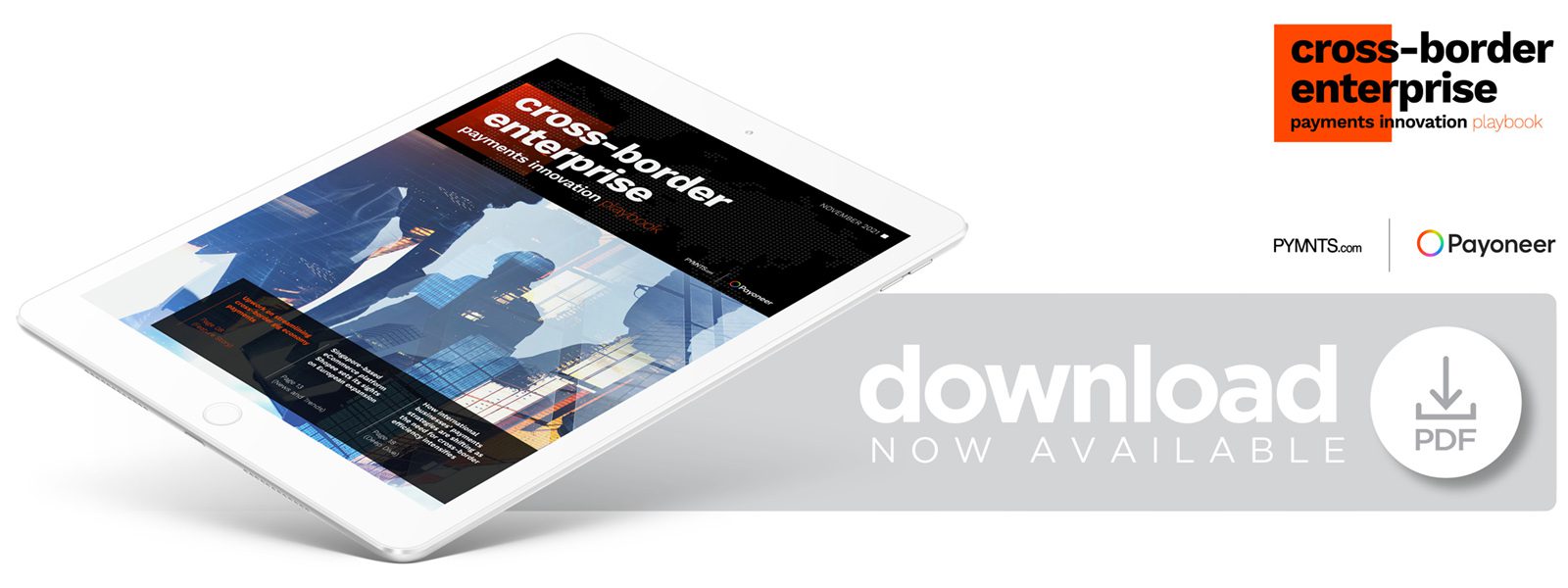Upwork On Streamlining Cross-Border Gig Economy Payments

Employers may have embraced an increasingly remote and global workforce, but paying workers around the world is not without its challenges. In the latest Cross-Border Enterprise Payments Innovation Playbook, Upwork’s Michelle Swiec discusses the digital payment solutions that can help employers pay in a seamless yet cost-effective manner.
The pandemic has normalized working from home, pushing many companies to take a remote-first approach to find talent. This may empower firms to hire the best employees anywhere on the planet, but it also makes facilitating seamless and cost-effective payments even more important.
This is especially crucial for remote workers in the gig economy, who have historically faced long wait times for compensation and have less tolerance for it today. In a recent PYMNTS interview, Michelle Swiec, senior director of global payment operations for freelance platform Upwork, discussed the rise of remote work and the gig economy, the dynamics of gig economy payments, and the role payments orchestration can play in both reducing frictions and maintaining a remote-first workforce. The work-from-home transition has unlocked gig-based work for more businesses and workers, for example.
“Remote work and the hybrid workforce have a symbiotic relationship with freelancing,” Swiec explained.
The rise of remote and hybrid workforces — and of businesses’ comfort with these organizational structures — “have opened up all kinds of flexibility and control for freelancers and allowed them to pursue further economic opportunity through freelancing as a viable career path,” she said.
Compensating freelance and gig workers is only one side of the equation, however. The flip side requires enabling a smooth, seamless payments experience for enterprise and other business customers using Upwork to find and pay for freelance services — and what that means is changing.
Meeting Payment Preferences
Swiec said Upwork has not observed a significant shift in gig workers’ payment preferences since the pandemic hit. Withdrawing earnings from Upwork accounts and depositing them directly into users’ bank accounts in their local currencies remains the most popular method, although this varies depending on location. For example, U.S. freelancers often use automated clearing house (ACH) transfers, while workers in Africa prefer the M-PESA digital wallet platform.
Another key variable is frequency of use, Swiec said. Freelancers that use the platform intermittently tend to opt for immediate withdrawals, while those who have ongoing business, such as weekly contracts with clients, prefer to set a schedule in advance. One nascent development is that more users are requesting digital wallets and cryptocurrencies as options, and the platform is currently working to meet this demand.
Swiec said that since the pandemic began, Upwork has simplified its payments process and is working on further improvements. For instance, the platform ended its five-day security hold on payouts to its top-rated freelancers and agencies working on hourly contracts. Upwork is continuing to “explore new payment solutions to make sure we’re consistently meeting our customers’ needs,” Swiec said.
“We have several payment solution launches on the roadmap and will look forward to hearing, incorporating and responding to feedback from freelancers on Upwork once [the solutions] go live,” she said.
Challenges in Global Gig Economy Payments
Payment frictions can cause major headaches for freelancers and sometimes still occur throughout the freelance marketplace, Swiec said. She pointed to three problems that tend to commonly affect cross-border payments.
The first of these issues is the sheer complexity of international transaction processing, which can involve many parties and manual steps where a payment can slip through the cracks. The second is user error in providing or entering correct bank details — something that sounds easy to avoid but can get messy, especially with international transfers. The third issue is the problems or disruptions that local regulations and payments infrastructure cause.
“For example, earlier this year, freelancers in Bangladesh experienced delays in payments due to a closure of operations at BEFTN,” Swiec said, referring to the Bangladesh clearing scheme.
The Efficiency Benefits of Payment Orchestration
Swiec explained that managing inbound payments from Upwork’s enterprise customers can be just as complex and challenging as ensuring smooth payouts to freelancers and gig workers.
“The challenges we face when it comes to accepting payments from customers located all over the world are typical of any global eCommerce merchant: varying card acceptance rates, varying payment regulations — [such as the] RBI mandate on recurring payments — and varying customer preferences,” she said.
Upwork addresses these challenges by conducting its own market research into the payments needs of both its freelancers and its enterprise clients. Swiec noted that payment preferences shift over time, and there is no “one size fits all solution” that will work for all international enterprises.
Payment orchestration is well-suited to address this very type of payments friction. Payment orchestration layers make use of application programming interface (API) technology and offer enterprises far greater IT infrastructural flexibility, allowing them to integrate and remove payments capabilities quickly and at a lower cost than would otherwise be necessary.
In practice, this means being able to add new payment methods as enterprises’ payments needs evolve with time and geographic location.
Payment orchestration can therefore empower international enterprises to be more agile and responsive to any issues experienced, regardless of payment method or geographic location. Leveraging these systems will become crucial as the gig economy continues to expand across the globe and as more professionals take advantage of remote opportunities.
